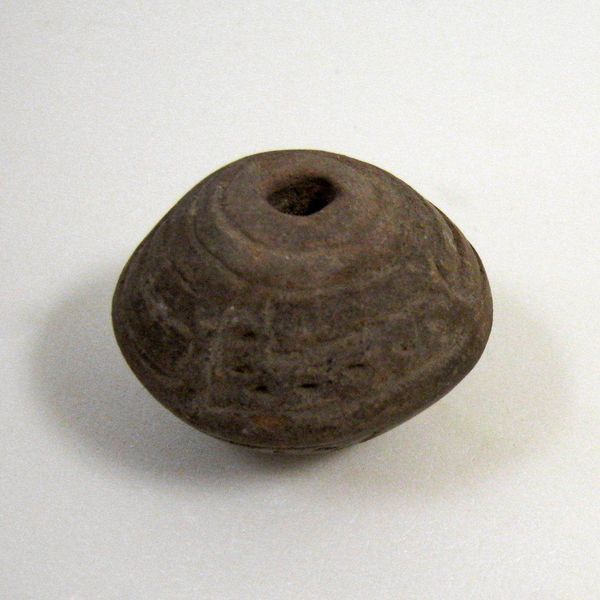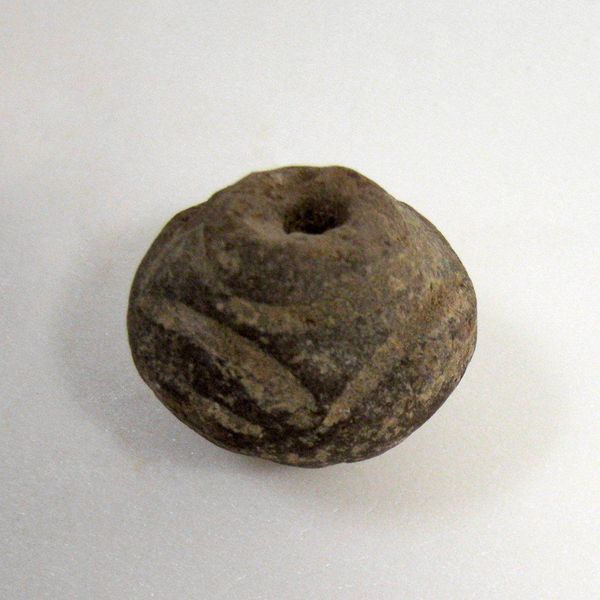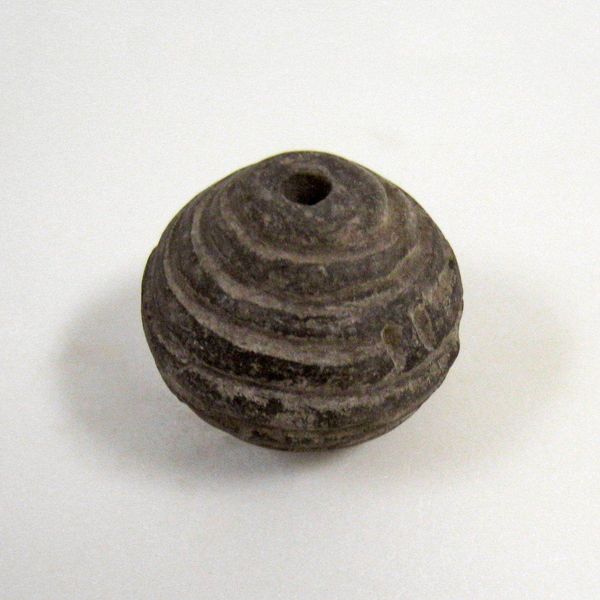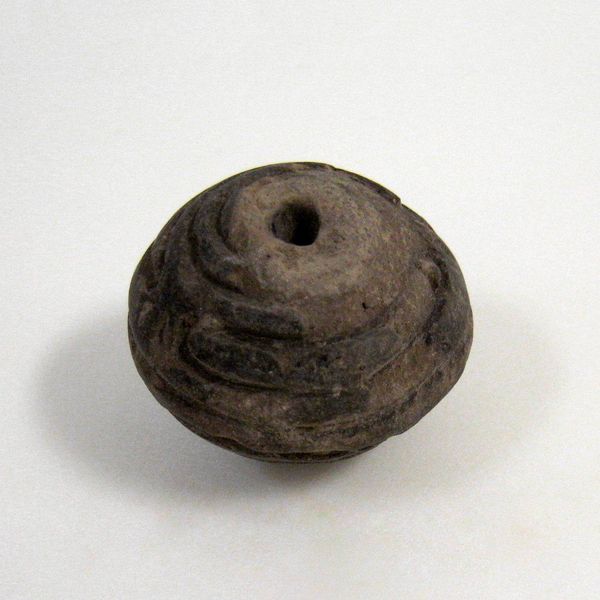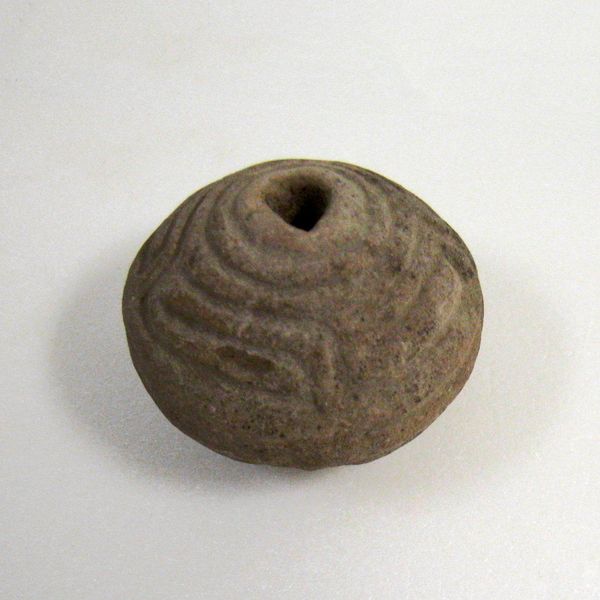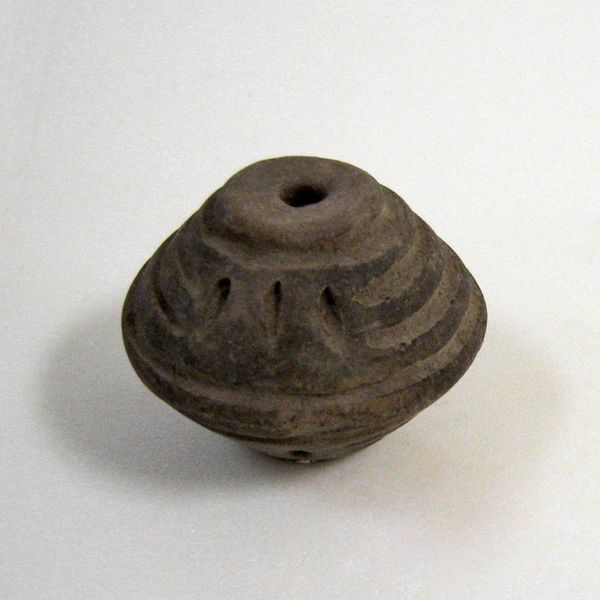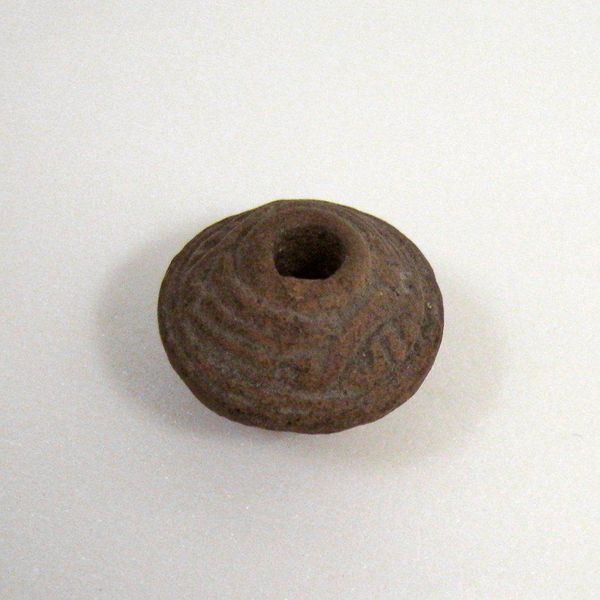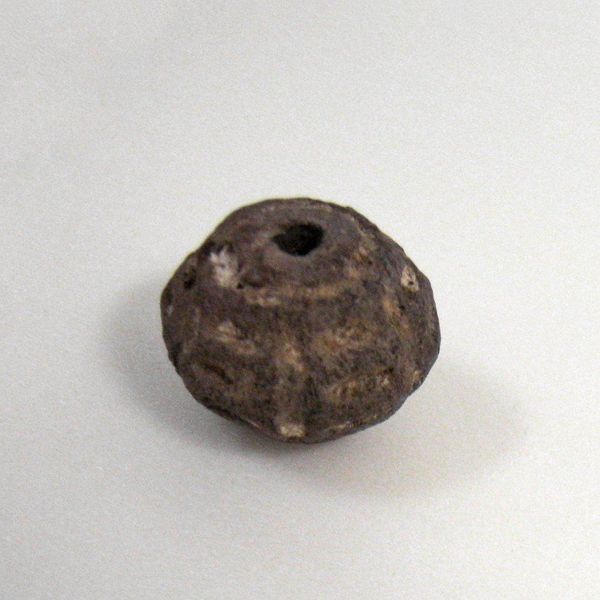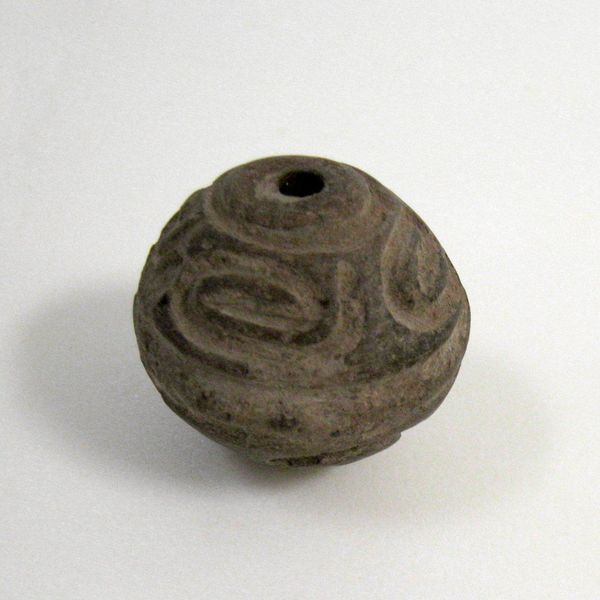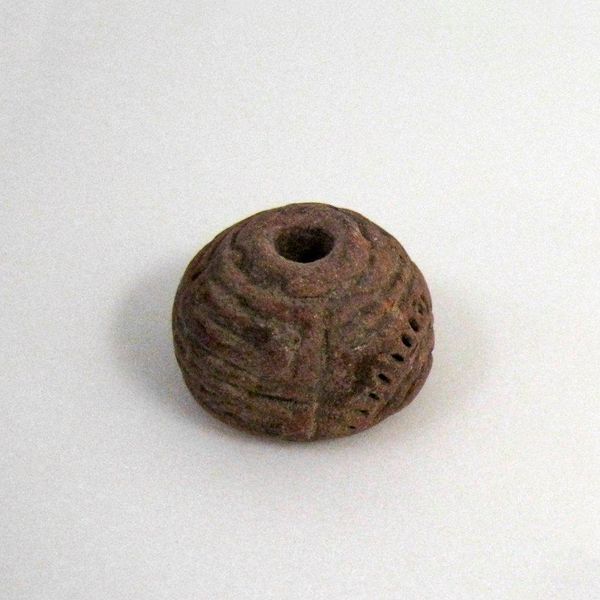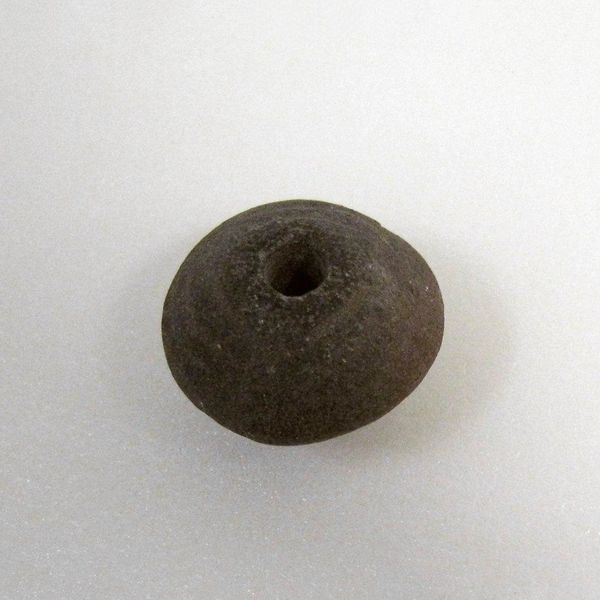
sculpture
#
medieval
#
sculpture
#
form
#
geometric
#
sculpture
Dimensions: 1 1/4 x 1 3/8 in. (3.18 x 3.49 cm)
Copyright: Public Domain
Curator: What strikes me immediately is its textural quality, the concentric grooves, almost like the rings of a tree. Editor: Today we are looking at a spindle whorl dated to the 15th century. Currently it resides here, at the Minneapolis Institute of Art. It is anonymous. Curator: And materially, it seems quite humble. The sphere has imperfections that denote either wear, or perhaps the original carving itself. How did its role factor into that texture? Editor: These tools are historically significant; they’re integral in tracing trade routes and technological diffusion in textile production across cultures. They tell us a lot about economies. Curator: Of course. It's function informs the entire structure. I notice, also, a tension between its roundness and the etched lines. Formally, these lines are obviously decorative, but one could see their placement and direction as directing and regulating movement and speed in the hand of its user. It almost visualizes potential energy. Editor: Indeed, seeing how ubiquitous textiles were—and still are—one realizes the social significance of these small instruments. The question, perhaps, becomes: who were the makers? What stories do these whorls whisper about their role within gendered labour? Were they heirlooms or personal tokens, maybe decorated to express their owner's individuality? Curator: It seems deceptively simple, doesn't it? Yet the whorl invites a profound dialogue about art, history, craft, and technology that remains incredibly present today. Editor: It really emphasizes the importance of these everyday objects, making clear just how profoundly historical inquiry enriches the most mundane items.
Comments
No comments
Be the first to comment and join the conversation on the ultimate creative platform.
